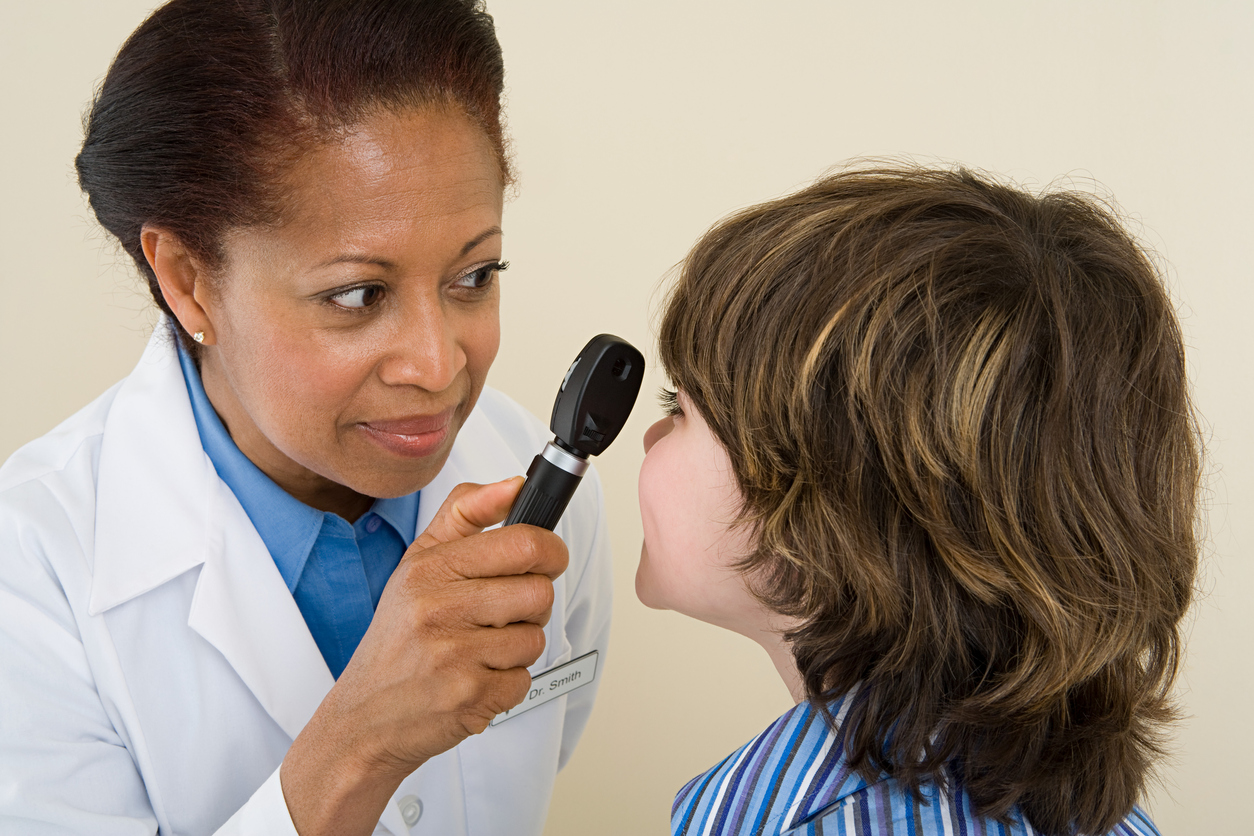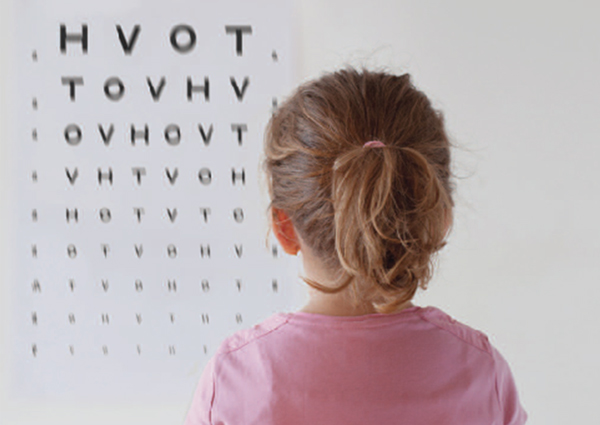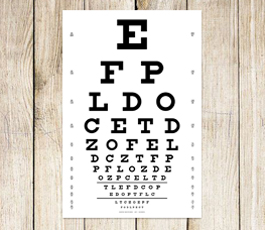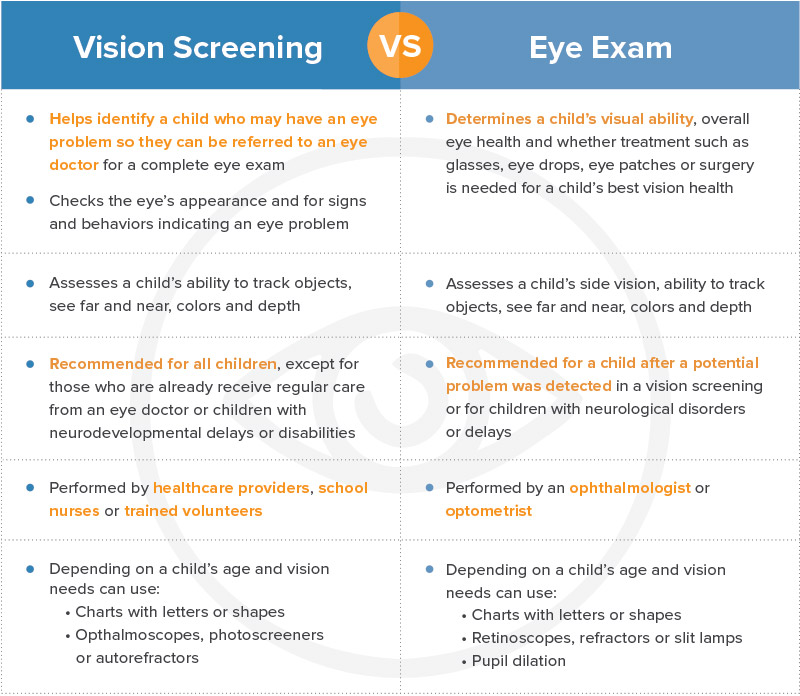Why are regular vision screenings important?
- To identify children who may be at high risk for an eye problem and need a complete eye examination.
- To help detect a possible eye problem early when treatment is likely more effective.
- To learn valuable information about your child’s eye health.
When should your child receive a vision screening?
- For the first time as early as age 1 during his/her well-child visit
- At least once between 3-5 years old by his/her primary healthcare provider or a trained screener
- Annually in kindergarten through fourth grade and every other year after that
Where can your child can get a vision screening?
- At pediatrician’s offices and other healthcare settings during well-child visits
- At educational settings such as Head Start, preschool programs, elementary schools
- At community settings such as libraries and health fairs
What should be included in your child’s vision screening?

Your child’s healthcare provider may also look into his/her eyes using a special lighted instrument called an ophthalmoscope.
Children ages 0-2 years
Vision screening for children ages 2 and younger is typically done by healthcare providers. During this screening, the healthcare provider will ask about your child’s health history and behavior. For example, the provider may ask about your child rubbing his/her eyes, any redness or unusual crusting in the eye area, or complaints of eyes or head pain. Your healthcare provider will also examine your child’s eyes and check your child’s ability to track an object. Your healthcare provider may also look into your child’s eyes using a special lighted instrument called an ophthalmoscope. Some healthcare providers may use special vision screening instruments called photoscreeners or autorefactors. A photoscreener or autorefractor uses light to take a picture of your child’s eyes. These vision screening instruments can be used on children as young as 12 months.*
Screening your child’s vision by asking them to follow an object (for example a penlight or a pencil) with their eyes may be used as part of a vision screening for young children, but is not a complete vision screening.

Charts for young children have either shapes that look like a square, circle, house and apple, or letters (H, O, T, and V).
children ages 3-5 years
Children ages 3-5 years get vision screenings using charts to measure visual acuity, or how well a child can see. Charts for young children have either shapes that look like a square, circle, house and apple, or letters (H, O, T, and V). Your child will be asked to stand at a distance from the chart and read the shapes or letters aloud. Each eye should be tested separately by covering one eye at a time using a patch or specially blacked out pair of glasses.
Many children younger than age 5 may not be able or willing to cooperate in a vision screening with charts. In those cases, vision screening can be done using special vision screening instruments called photoscreeners or autorefactors until a child is old enough to use a chart. A photoscreener or autorefractor uses light to take a picture of a child’s eyes and tells a lot about the health of his/her eyes. These vision screening instruments can be used on children as young as 12 months—but do not measure how well a child sees (visual acuity). Thus, it is important to use a chart with shapes or letters for your child’s vision screenings as soon as he/she is old enough to cooperate.
Screening your child’s vision by asking them to follow an object (for example a penlight or a pencil) with their eyes may be used as part of a vision screening for young children, but is not a complete vision screening.

Snellen Chart
Children ages 6 and older
Children ages 6 and older who know letters in the alphabet can usually be vision screened using charts with the big letter E (called a Snellen chart) that are usually used with adults. This chart measures a child’s visual acuity (20/20 vision or 20/40 vision for example) for Children Ages 6 and older. The screening should also use other charts or pictures to measure how well your child sees distance, color and depth.
Note: A vision screening is not necessary for children with certain developmental delays that cause difficulties with language and speech, motor skills, behavior, memory, learning, or other neurological functions. Instead, eye doctors recommend that all children with these types of delays receive a comprehensive eye exam.
Vision screening is covered for every child under age 21 by AHCCCS (Medicaid); under age 19 by KidsCare, and most private insurance plans. Check with your insurance plan for information. Find more information here.
You may find information about children’s 8 key vision development milestones here.
*Source: National Eye Institute



